- This feature was published in RAIL 924 (February 10-February 23 2021).
Cast your mind back to 1977. It is Her Majesty the Queen’s Silver Jubilee year, James Callaghan is Prime Minister, and punk rock is at its peak.
It is also a notable year in the history of King’s Cross station, following the completion of a major resignalling and remodelling programme that had been necessitated by the renumbering and reorganisation of the station’s 14 platforms some five years earlier.
The new simplified layout reflected the decision to concentrate suburban services on the western side of King’s Cross and to close the Up and Down platforms for the Widened Lines to Moorgate via Farringdon.
Crucially, British Rail also opted to introduce bi-directional running on the station approach, to give it enough operational flexibility to serve the station using just four tracks instead of six.
Cheaper and easier to maintain, these tracks were aligned with the western and central bores of Gasworks Tunnel, which dips beneath Regent’s Canal at the country end of King’s Cross.
Shorn of the purpose for which it was built, the eastern bore was subsequently abandoned before eventually finding use as a convenient route for maintenance vehicles and signalling cables.
Fortunately, all that is about to change. The station throat is alive again with the sound of construction and the flash of orange personal protective equipment.
Rampant passenger growth over the last quarter of a century at what is now Britain’s tenth busiest station (used by some 32.5 million passengers in 2019-20) has given Network Rail cause to put back much of what was removed more than 40 years ago.
The original six-track approach is currently being reinstated by reopening the under-utilised eastern tunnel, while all life-expired track, sub-systems and overhead line equipment for a distance of up to one and a half miles from the buffer stops is being renewed.
Signalling control is also in the process of being transferred from King’s Cross signal box (which will close) to York Rail Operating Centre.
Due for completion in early June, the £259 million King’s Cross remodelling project forms a key part of the wider £1.2 billion East Coast Upgrade (ECU).
Comprising a suite of enhancements including a new dive-under at Werrington (see RAIL 924), the ECU has been carefully designed to accommodate growth on an East Coast Main Line that was carrying some 58 million tonnes of freight and 20 million passengers per year before the Coronavirus pandemic.
We can only speculate on when demand will return to that level, but NR is nevertheless committed - through ECU - to delivering an uplift in long-distance high-speed train paths between London and Doncaster from six trains per hour to 8tph by May 2022.
Speaking to RAIL in mid-January, Network Rail’s Eastern Region Capital Delivery Director Rob Cairns is clearly relieved to have reached this critical delivery phase of the King’s Cross project.
There is never a good time to take possession of tracks feeding into such an intensively used station, so getting agreement from train operators to do just that has been fraught with difficulty.
“We’ve been through a number of replanning cycles, which has been a great example of how complex the project is but also how many stakeholders it touches,” says Cairns, in diplomatic fashion.
“I’ve certainly learned a lot about how the industry works, and at times how complicated it can be and how intricate the planning has been in terms of the interfaces with the stakeholders.”
Cairns is joined on RAIL’s call by NR East Coast Route Director Paul Rutter, LNER Managing Director David Horne, and Thameslink and Great Northern MD Tom Moran.
Responsible for the vast majority of traffic moving in and out of King’s Cross, Horne and Moran both led the way in the stakeholder ‘interfaces’ to which Cairns’ refers.
The two men also co-chair the ECU Delivery Board, which conducts cross-industry readiness reviews and provides oversight for all closures or part-closures on the ECML.
It was through this role that the Board was in a position to block NR’s original intention, which was to complete the highly disruptive works by closing 50% of the platforms at King’s Cross between December 2019-March 2020.
Still reeling from the poor execution and bitter fallout of the notorious May 2018 timetable meltdown, train operating companies were united in their preference for NR to reschedule the part-blockade to a later date, in order to better prepare and finesse passenger handling strategies.
A 12-month delay to December 2020 was deemed to be the best option, and would coincide with a planned increase in the frequency of Thameslink services - offering a much-needed alternative route into central London via Canal Tunnel for passengers using the ECML (RAIL 867).
But that plan would also eventually be shelved, falling victim in March 2020 to the Coronavirus pandemic sweeping the globe and the widespread uncertainty that it triggered for project delivery in all areas of construction.
With just 40 weeks to go before the planned start of the works, no sensible individual could overlook the potential threats that COVID-19 posed to the availability of timetabling resources, train staff and NR’s ‘Orange Army’.
NR Principal Programme Sponsor Ed Akers revealed in September that several options were subsequently explored to revise the plan - from deferring the part-closure for a further 12 months through to fast forwarding the works to begin last autumn (RAIL 914).
Akers told RAIL that the former was discounted owing to the extra costs that would be incurred by enduring another long delay to the project, while the latter was soon dismissed given the urgent need to retain sufficient capacity into central London for key workers.
An industry-wide decision was therefore arrived at to concentrate as much work as possible over a short and intensive nine-day Christmas period, and then across a number of weekends in January and February.
The much-anticipated three-month part-closure to complete the project will now take place from March 1-June 4, although with a substantially reduced impact on services.
Cairns explains: “If we go back to the spring, when the pandemic first broke out, it appeared as though the continuance of the works was going to be impossible - whether that was due to the supply chain being affected or whatever else.
“But a great deal of agility was shown by our supply chain and, through the utilisation of some obvious site controls such as staff separation and extra cleaning, we gained some answers pretty quickly that allowed the work to go ahead less disrupted than you might assume.
“Coronavirus, in that respect, has affected us far less than we imagined. And, dare I say it, the reduced levels of ridership and station usage have perhaps worked to our advantage, so we’ve gone through COVID-19 better than we thought we might.
“The fear at Christmas was that we’d face difficulties from COVID-19 or the weather that would cause us to curtail some of the work or to go back to the table and ask for even more access. But we didn’t do that, and it was a wonderful position to be in when handing back on January 3.”
During the full blockade of King’s Cross from December 25-30 and then a part-blockade from December 31-January 3, NR’s teams completed an impressive body of work at what is an extremely constrained site.
Access is hampered by an inability to bring in rail vehicles from multiple directions, while the site is also hemmed in by a large construction site on King’s Boulevard for the new Google building.
Meanwhile, storage space for plant machinery and other equipment is also at a premium, making it equally difficult to process the considerable tonnage of material that is required to be brought in and out.
This includes the 850 tonnes of spoil that was removed in front of the southern portals of Gasworks Tunnels, in order to excavate, divert and then rebuild the Camden Sewer - through which some 3,200 litres of water passes per second.
Fifty-four five-tonne sections of pipe were lowered and installed into the 11-metre-wide and three-metre-deep excavation, before 640 tonnes of new ballast was brought in by rail and the tracks relaid.
Elsewhere, new switches and crossings and signalling equipment has been installed, while efforts continue away from the operational railway to fit out the disused bore of Gasworks Tunnel and a rebuilt section of trackbed at its northern end.
Platform 0 has been demolished and is being realigned to connect with the new six-track approach, with other platforms due to follow as part of an overall reduction in the number of platforms at King’s Cross from 12 to 11.
Lengthening of the remaining platforms, reduced conflicts and an increase in line speeds through the station throat will ensure that there is no loss in capacity.
“It was a cruel irony that much of the spoil we’ve removed from Gasworks Tunnel had been conveniently dumped there as easy storage when Platform 0 was constructed in 2011,” adds Cairns.
“It’s also a great example of the complexity of the site, which is like an iceberg where you can see a little bit at the top and then everything beneath is invisible.
“Dealing with everything below the ballast - whether that’s drainage, cables, culverts or Victorian sewers - and doing that in a way that doesn’t disrupt train services is far more complex than the frankly pretty straightforward engineering when we get above ground.”
Away from the visible engineering side of the Christmas works, it is easy to overlook the essential role played by the project’s ‘back room’ staff, who were faced with a number of unenviable challenges.
These included ensuring that all 1,000 people involved in the project at Christmas had somewhere to stay and could travel safely into King’s Cross at a time when London and the surrounding area was subject to the tightest Tier 4 government lockdown restrictions.
Moran leads the tributes to this largely unseen contribution to the project: “It’s a great reflection on the amount of planning that was done. They had contingency upon contingency upon contingency, and as a result it’s no coincidence that the works went very smoothly, despite all of the challenges they had to face.”
But what about the passengers? How pleased were the operators with the way that disruption was minimised, social distancing protected, and with the effectiveness of
their communication campaigns urging people not to travel?
Much of their success relied on careful co-ordination between LNER (which was terminating inter-city services at Peterborough and Stevenage) and GTR (which ran connecting services into London via St Pancras and the Thameslink central core).
The two operators had planned for spikes in demand on December 23 and December 27, but were then helped enormously by the Prime Minister’s late cancellation of plans for a five-day relaxation of Coronavirus restrictions.
Managing capacity was also greatly aided by the real-time data provided by LNER’s reservation system and by the passenger loading technology fitted to GTR’s Class 700 and ‘717’ fleets.
Horne explains: “The challenge for us was that we were providing a lot less capacity on our long-distance services than what we’d normally need at Christmas. Because we were turning our services around and then asking passengers to travel on GTR services, we needed to have a significant reduction in use at Christmas.
“It just so happened that the Christmas travel window was cut right back and so we were able to get well within the capacity levels that we were running. The team did a great job in terms of raising awareness and we haven’t seen any impact on our customer satisfaction score as a result of the work.”
Moran adds: “I genuinely couldn’t be happier with how it’s gone. As David mentioned, our expectations changed more than once, but for very sensible reasons we ended up with far fewer passengers.
“But it felt to me like every aspect had been anticipated by the team. And if you can plan and think of all eventualities, then it’s unsurprising that things went really smoothly despite being a complicated operation.”
The ongoing effects of the Coronavirus pandemic has also given NR, LNER and GTR added confidence going into the next and final extended period of disruption, running from March 1-June 6.
With the exception of six days when there will be no services into King’s Cross (April 23-25 and June 4-6), a temporary timetable will be in operation to enable NR to shut half of the platforms at a time (0-6 first and then 7-11 from April 26) and continue its remodelling and asset renewal activities.
This will result in a reduction from 12tph entering the station in the morning peak to 10tph, and a much smaller impact being felt outside peak hours.
Horne says: “We are building up assurance for this partial closure and the preparations are going well. Clearly with the pandemic it feels like it’s going to work in terms of getting in and doing the work when passenger numbers are still much lower than normal.
“That will minimise the numbers of customers affected, but there’s a good plan in place to keep trains running and I’m very much looking forward to that date in June when the works are complete, and our customers are able to enjoy travelling on the new layout.”
Last but not least, how do all the stakeholders now feel about the continued importance of a £1.2bn upgrade programme underpinned by passenger growth assumptions that have been blown apart by the pandemic?
Consultations begin in March on whether any of the additional train paths will be taken up in the May 2022 timetable change. But there is also a considerable legacy of new and improved infrastructure.
Replacing life-expired assets will lead to greater reliability, which in turn could play an active role in attracting passengers back to the network once the pandemic has been brought under control.
“From our point of view, it is essential as we are maintaining assets that are very old,” says Rutter.
“We are also transferring signalling control to York, which is a key enabler of Digital Railway and the next stage of the history of the premier line in Great Britain.”
Horne says: “I agree with the infrastructure element of this. When the King’s Cross layout was put in, Deltics were running at 100mph top speed. Projects like this are all about ensuring that the new Azuma fleet can run at its full potential.
“Rail has a bright future and there is an opportunity to attract those people travelling by car and air onto the East Coast. Work such as ECU is absolutely critical to enable us, as a train operator, to be able to do that.”
Moran concludes: “We carry hundreds of thousands of people into London every day and what they want is a reliable train service. This will make every day more reliable and provides the high-class, modern and on-time railway that we want to give people when we welcome them back.”

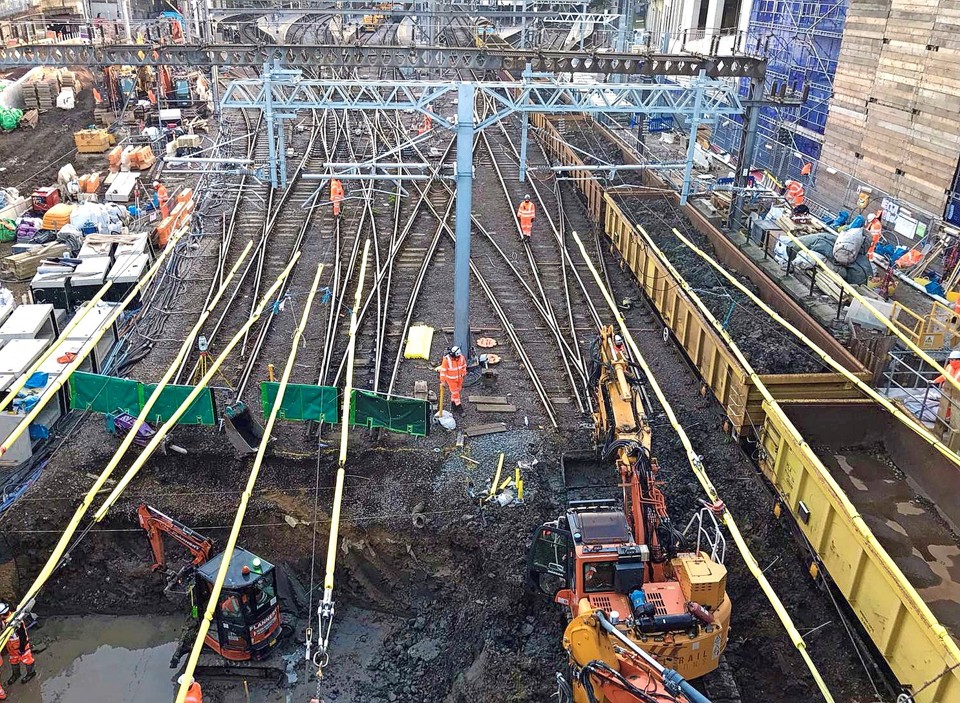
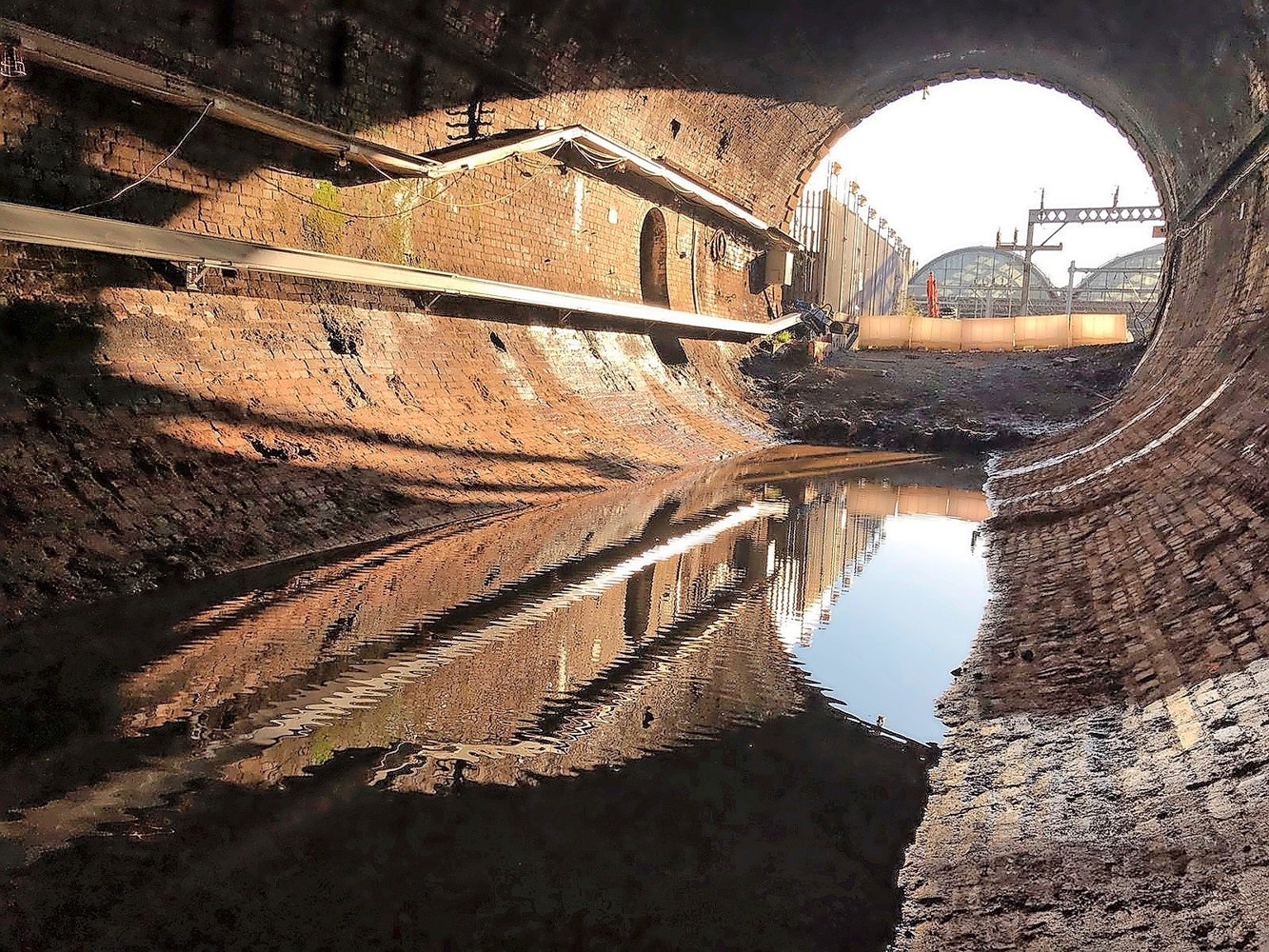

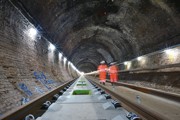
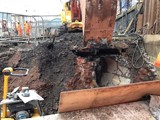
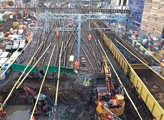


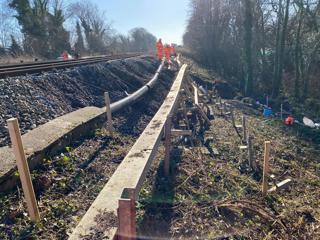
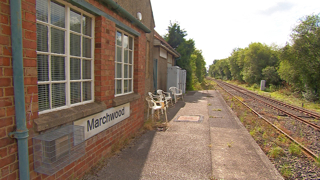
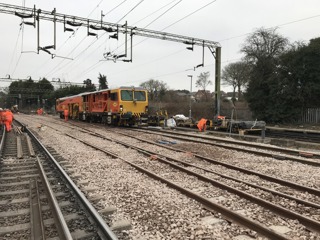
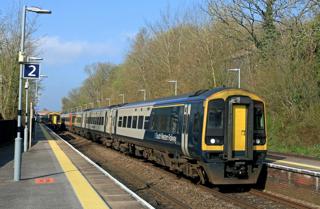
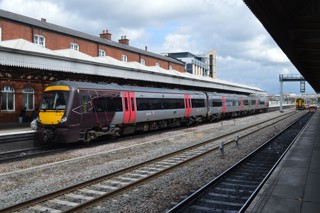











Marcus Gibson - 28/05/2021 12:14
Great news to see Kings Cross's capacity being renewed, and the layout simplified. However, the really terrible pinchpoint is the two-track layout just to the north - Digswell Viaduct and track through to Welwyn North station. A dramatic solution would be a completely new 4 track tunnel and viaduct alongside the original, minimising disruption during construction. The remaining two track and station would make a lovely heritage railway.